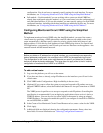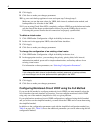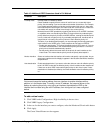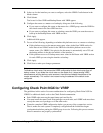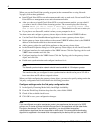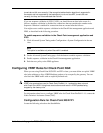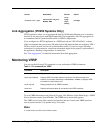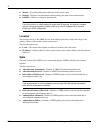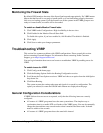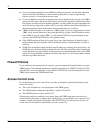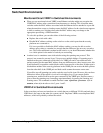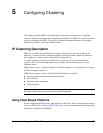
Nokia Network Voyager for IPSO 4.0 Reference Guide 201
Link Aggregation (IP2250 Systems Only)
IP2250 appliances allow you to aggregate the built-in 10/100 mbps Ethernet ports so that they
function as one logical port with higher bandwidth. These appliances offer link aggregation to
accommodate firewall synchronization traffic in VRRP configurations.
If you configure two IP2250 appliances in a VRRP pair and run VPN-1/FireWall-1 on them,
Nokia recommends that you create a 200 mbps logical link between them and configure VPN-1
NGX to use this network for firewall synchronization traffic. If you use a single 100 mbps
connection for synchronization, connection information might not be properly synchronized if
the appliance is handling a large number of connections.
See “Link Aggregation” for detailed information about link aggregation.
Monitoring VRRP
You can use the following CLI commands to view and monitor VRRP information:
To view VRRP information using Network Voyager, click Monitor (on the Home Page) > VRRP
Service Statistics (under System Health). The VRRP service status table appears.
The VRRP service status table contains per-interface and per-virtual router VRRP send and
receive packet statistics. It is updated every 20 seconds.
State
A virtual router can be in one of three states:
Source Destination Service Action
cluster-all-ips
fwcluster-object
MCAST.NET
vrrp
igmp
ospf
dvmrp
Accept
Table 11 CLI commands for VRRP
Command Description
show vrrp Displays a summary of the VRRP state on the node.
show vrrp interfaces Displays VRRP information about all interfaces. Use with the name of an
interface, for example show
vrrp interface <name>, it displays VRRP
information for that interface only.
show vrrp stat Displays statistics for all VRRP interfaces.
show mcvr Displays information about all monitored-circuit VRRP interfaces.



